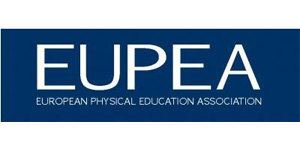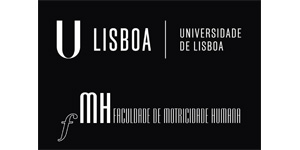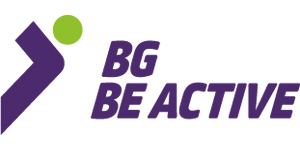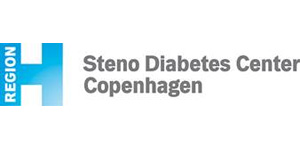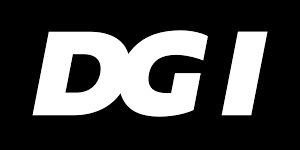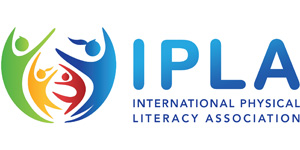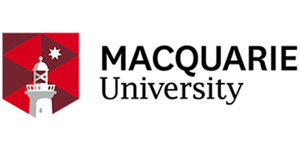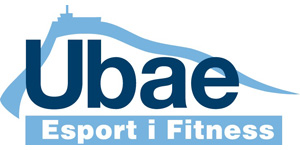Podcast: New perspectives on physical literacy with Dean Dudley and Rose-Marie Repond
24/03/2021
"Learning happens our whole life and physical literacy is essentially the concept of how we learn and express learning through movement. So it is both a process – I acquire it through movement, but is also an outcome – I express my learning through movement. I don’t express it writing an essay about how much I love football; I play football, I live it."
Physical Literacy experts Dean Dudley from Macquarie University in Australia and Rose-Marie Repond from EUPEA take an in-depth look at the concept from perspectives we may never have considered before, including how physical literacy can support the UN's Sustainable Development Goals (SDGs), why we can compare physical literacy with the periodic table of elements, and many more exclusive insights.
This podcast is part of the Physical Literacy for Life project, supported by the EU's Erasmus+ Sport Collaborative partnerships.
Listen to the full podcast or read the transcript below.
1. Do individual factors (race/ethnicity, education, previous experience, etc.) affect physical literacy across the life span (e.g. according to age/developmental stage)?
Physical literacy is not dependent upon ethnicity. It is a human quality, and some might even argue that it’s more than a human quality – it might be something that proliferates in all animals. Is it affected by education? Absolutely, and previous experience. Education is more than just school. Some physical literacy will be exacerbated or increased by the more educative experiences that they have. And those experiences could be in sport, school – they could be experiences where they just felt they were learning, like with a parent or grandparent.
Does previous experience matter? I think it does. Like any learning, if we’ve had a negative experience and we feel that we’ve dealt with it poorly in the past, it will have an impact. When I talk to people about physical literacy I tend to talk about it within ‘strength space thinking’. Rather than identifying people's previous deficiencies, we start from a point of what they can do. We are not inhibited by previous experiences; we work through that.
In the age and the developmental stage, we are predisposed across our life courses to pursue different types of activities. This is why it’s really important to understand and follow genetics and skill acquisition theory. We understand that there are some movement patterns that we learn as humans to survive. We learn to walk, crawl and run. We don’t just “get” them, we learn them because we need to survive. We learn other skills to become part of the largest social group. There is no need to learn to kick a football. We learn to kick a football because it connects us with other humans.
That’s why I think it’s really important to position physical literacy as learning, because some things are – they’re not innate – but we learn them to survive on this planet, and another set of skills and competencies of movement structures we learn to be socially included.
2. Across the life span, what are the benefits of higher levels of physical literacy?
Physical literacy is elemental; I like to think of all the different components as part of a periodic chart. People with a high level of physical literacy have elements from different learning domains, whether it be social, cognitive, emotional or physical. And what makes people pursue physical activity across the life span is when those elements bond with other elements so they turn into these movement compounds.
For example, I learned how to surf, which is an object locomotion-type skill. But learning to surf and not coupling that with a social understanding, like ethics or rule-following, I’ll find myself not being able to execute that skill for long, because surfers are very territorial. I need to link that with an emotional thing like a connection to the environment.
So the more bonds and learning elements that you can piece together around different types of movements, the more likely that you are able to pursue them across your entire life. So that’s where it differs from thinking about it just in terms of fundamental skills or being motivated. You’ve got to connect the dots, and that’s the real strength of physical literacy.
3. Could you explain why physical literacy is about learning? And how would you qualify the different domains of learning?
Essentially all literacies are about learning; they are not subjects. When we talk about literacy we talk about it crossing all aspects about life, not just in the language arts. Or when we talk about numeracy we talk about all aspects of mathematical learning, not necessarily what we learned in mathematics. And that is why physical literacy is very different from physical education.
Do we learn physical literacy in PE? Do we learn the aspects of physical literacy in PE? Yes, absolutely. But physical literacy can be learned in other aspects of the school. For example, it can be learned in recess, in sport, moving from class to class, or taking the stairs. And, literacy does not stop when we finish school. Just because we stop studying English, French, or mathematics when we leave high school, does that mean we stop learning to be literate or numerate? No, the context changes and when that context changes it’s still a learning phenomenon, so we might be learning in our workplace. If I learn to walk or cycle to work, or to play in a social group in the workplace, that is physical literacy but not PE.
Learning happens our whole life and physical literacy is essentially the concept of how we learn and express learning through movement. So it is both a process – I acquire it through movement, but is also an outcome – I express my learning through movement. I don’t express it writing an essay about how much I love football; I play football, I live it.
4. How could you convince policymakers that physical literacy should be part of the key competencies of the curricula or at least a transversal competence?
Unlike a lot of literacies or other competencies, when we think about the Sustainable Development Goals (SDG), there is more to physical literacy than just SDG4. When schools think about the curricula and try to answer SDG4, physical literacy is a no-brainer there because it forces us to think very deeply what quality PE looks like or what the learning in the schools look like. But it’s bigger than that, because it’s about good health and wellbeing. So it’s about SDG3. But it’s not even just about that – it’s about sustainable living and taking care of the environment.
So this is why it needs to be seen as a competency in the curricula. It’s not pigeonholed by one SDG; it essentially answers to about five or six. By having it in the curriculum we can start to understand its validation beyond physical education and what we do in sport. We set up our classrooms differently with standing desks or take classrooms outdoors and teach outside. If we’ve learned anything from Covid, that’s wonderful, right?
I think understanding about how your body interacts – it’s not just how you feel, it’s about how you interact with others when you move, how you interact with the environment and how you see that all of these things are connected. It’s really about seeing value on what we learn beyond the moment in which we acquire it. And there is lifelong component to it. Yes, you can capture it in a moment as an outcome, but it is part of longer process that we never stop acquiring.
We want to express our interest and understanding of it is so we can put structures in our society in place allowing people to express their learning and live through their bodies, and live physically active lives, because they will live more sustainable lives, they’re less of a burden on the health care system, they use less transport, they have a lower carbon footprint.
5. Could you explain the comparison of physical literacy and the construct of learning with the periodic table (the Mendeleevian model)?
What we have at the moment, a bit like when Mendeleev came up with the periodic table of elements, is that we know some of the elements. We know things like fundamentals movement skills, health-based and fitness skills. But we also know about teamwork, problem-solving, rules, strategies, tactics, and, we know the social connection. All these things are important and they come across in the different learning domains. But we don’t know all of them. Just like Mendeleev, we understand that all of these things matter to one’s physical literacy and they all interact. Some things are really vital to each other in the same way as some metals can’t exist without oxygen. Then there are things like gold. Gold doesn’t bond with anything but when you have it you know it’s worth a lot. So there are elements of physical literacy out there that when you have it – whilst we don’t know what it really is – it will be something really special.
We have to celebrate what we know but undertake that quest that Mendeleev did, because there is more stuff out there. We need to consider that there are people behaving, thinking and moving in ways that we don’t really understand (why they do this), not focusing just in one aspect (just movement, just motivation, just environment). Physical literacy researchers are interested in the relationship between all those components/domains. We’re interested in the whole periodic table of elements and we’re looking for things that people haven’t discovered yet.
6. Why physical literacy and not only physical education or physical activity?
Physical education is a standalone curricula dimension that happens in schools as a subject. It’s very rigid for the most part. Physical education is one intervention that schools have implemented to try to teach physical literacy. But is it the only thing? Of course not. People were acquiring physical literacy before schools were even conceived.
Physical activity seeks to quantify the amount or intensity of the activity that we do. This is a much broader construct. You don’t learn physical activity, it’s just something you capture. It’s how much energy we expend doing a specific discipline at any giving time through movement. Can you have a quality physical education programme that doesn’t include physical literacy? I’d say no. You might also have high levels of physical literacy for stuff that has high levels of physical activity, but other things that have low levels of physical activity (Yoga and Pilates) might require a great deal of physical literacy. So physical literacy and physical activity are related but they are not the same.
7. What do individuals need to participate in their physical literacy journey throughout life?
We know that variety is important. Early specialisation is a bad starting point, because it is against the long term physical literacy development. For many reasons, increased risk of an injury, people who specialise too early experience difficulties to transfer their knowledge.
8. Can any person improve their physical literacy?
It depends. We start from a strength-based approach and looking for what people can do rather than what they can’t do. Because physical literacy is not determined by disability, weight, or body shape. It is determined by finding a place of comfort in terms of how you move and acquiring the learning and skills to build up from that position of strength.
9. How and why is physical literacy participating at the knowledge and understanding of your moving journey?
Physical literacy requires surface learning, to understand the simple things before you can move on to a more complex area (moving to more complicated activities). Physical literacy is a combination of surface understandings we commit to our long-term memory so we can work on more complex learnings when we have to transfer and create.
10. Which are the social and cultural factors that influence the development of physical literacy?
They are all important, but, culture is incorporated into our social norms following the replication of sports, dance, etc. Physical literacy is being influenced by culture everywhere. Society and culture are elements that play a big role in physical literacy, and it is very hard to break down not using the culture as an influence. The person will often adapt to the movement and learning of the societies in which they reside.
11. Could you explain the interaction between the learning domains – emotional, social, cognitive and social?
The interaction between the domains is constant, and, we are looking to understand which ones provide us more stability to be likely to come back to the activity. I argue that the most stable physical literacy compounds actually have elements from all four. Someone has all of the social elements will find it hard at some point if they don’t have the physical learning elements coupled in there. In the same way, if I don’t have the emotional confidence to keep coming back, the movement sequence breaks down. So if you look at physical literacy using the elemental analogy, people that are more stable in terms of their physical literacy have this compound of movement that draws on of all four elements or domains. Why it’s powerful to think of it across all the learning domains is if we’re coaches or teachers, we can think about every client or every student or every player in those four domains looking for what they need and what can be improved.
12. Why should we value and promote physical literacy within our society?
We value and promote physical literacy because we know that we need to lead more sustainable and active lives. It’s not just about quality education, it’s also about good health. The new generations are living longer, they need to take better care of the planet and have a smaller carbon footprint. They can’t exist being inactive, they can’t exist having poor health, they can’t exist if they stop learning when they finish their formal education.
We are using physical literacy as a concept that can be applied to all facets of exercise, being able to apply it in hospitals, public health, with doctors, schools, aged care home and sporting infrastructure. And we’ve got to reconceptualise that to break down that specialised model. And we’ve got to get all these people talking together so they can contribute where they’re best and share their knowledge with other organisations that struggle in that space.
Transcript edited and may omit some wording from the original recording.




